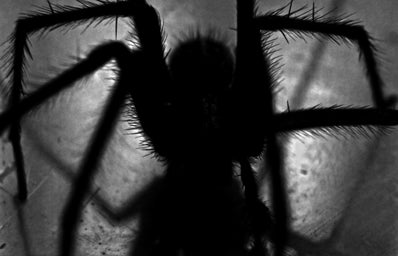Monsters are popular elements explored in the art world, especially on online platforms such as Tumblr and Twitter. The term ‘monster’ is more of an umbrella term, as subjects range from cryptids to aliens; all depicted in a myriad of styles that act as a staple in not only horror fictions, but even modern, creative renditions. Interestingly, such subject matter is frequently handled by the LGBTQ community, which may come across as paradoxical to some, considering the persistent negative stereotypes of queer people as ‘the other’. Why are monsters, something that has historically been associated with horror and aversion, often cherished by the LGBTQ community?
A common queer experience is being ostracized or isolated, similar to how monsters are treated by the human populace. Despite the advancements in queer rights such as legalized gay marriage and recognition of trans folks in recent years, the LGBTQ community still faces widespread discrimination, especially so in areas that are hostile to queer people for religious reasons. Whether it is bullying for being visibly gay or the constant anxiety experienced by those still in the closet, the element of fear is too well known among the queer community. Thus, the way monsters are detested resonates with queer folks; a characteristic further emphasized by the fact that monsters are often quasi-humans or beings that simply do not exist under a single category.
This connects to another defining aspect of monsters: transformation. This could refer to either monsters that could shift forms (much like the way werewolves do) or those that carry both human and non-human features. In a way, this specific quality resembles the transgender and non-binary experiences of transcending boundaries. Just as both queer groups do not conform to rigid heteronormative margins, monsters too fluidly pass between the lines of human and non-human.
Monsters could also be interpreted as representations of dysphoria as well as the opposite: loving yourself for who you are. In relation to the previously mentioned aspect of being ostracized, queer people can relate to monsters in the way that they are mistreated for their supposedly fearful attributes that they cannot change. Pixar’s Luca (2021) captures this concept with sea monsters that reside in secrecy alongside humans. Set in a sunny Italian Riviera, the story follows two sea monsters that have the ability to shift into humans while enjoying the pleasures of human life. Throughout the film, the protagonists struggle to hide their identities in a human town where sea monsters are feared to the point of being hunted. Although the film incited viewers to see the film as a queer story (it is worth noting that the two main characters/sea monsters are depicted as two boys enjoying a close relationship), the director shut down such notions in response. Contrary to the intentions of the director, the film has numerous areas that illustrate relatable queer experiences. In the end, the protagonists and their kind are accepted into the human community. In response to the mother of the protagonist being concerned of her son’s future in the human realm, his grandmother answers, “some people, they’ll never accept him. But some will. And he seems to know how to find the good ones” – a statement that could easily be read as how queer folks find accepting communities.
Unlikely it may seem, another reason could be hopelessness; specifically, feelings of despair, anger, and injustice under a society that refuses to treat queer people fairly. Monsters typically carry attributes related to strength and terror, which helps them drive fear into the hearts of humans and subsequently deters people from getting near. Both a classic figure in mythology and a feminist icon, Medusa could be considered an example of this. Although she has long been portrayed as a villain to be slayed, Medusa is undeniably a figure to be pitied, as her monstrous form was punishment for being raped in a temple dedicated to the goddess Athena. It thus comes as no surprise that she was endorsed by feminists as an icon; her myth representing the patriarchic structure of traditional society. In addition to being a parable of women unjustly punished instead of their male perpetrators, her story has also been interpreted as so: instead of a curse, Athena blessed Medusa the means to protect herself onwards. Furthermore, despite being a monster, her presence was also considered to hold significant power, which explains why her visage graces pottery, jewelry, and even armor. Monsters like Medusa own powers to defend themselves, desirable in the eyes of queer people who feel helpless to threats of being outed and harassed.
From mere beings of terror to allusions of queer experiences, monsters have undergone dramatic changes in their treatment by the LGBTQ community. Reclaiming monsters has not only turned over the outdated, cruel way the term ‘monster’ has been thrown at queer folks, but also opened a vast and creative outlet for queer people to express themselves. It is interesting to witness this fascinating phenomenon grow and transform in the coming years.


